Introduction
Did you know that there are over 50,000 molecules in plant foods?
But here’s the kicker: Much of these nutrients–which are key for optimal immune, respiratory and mitochondrial function, and protecting us from disease–are now diminishing from our food supply due to modern agricultural practices.
This week on The Goodness Lover Podcast we spoke with Dr. Joseph Pizzorno - naturopathic physician, educator, researcher, founder of Bastyr University, textbook encyclopedia writer, and editor of "Integrative Medicine: A Clinician's Journal," the most widely distributed peer-reviewed journal in the field of natural medicine.
Watch the Interview:
We dove into Dr. Pizzorno's wealth of knowledge to learn about the power of phytonutrients, including:
🔬 How quercetin showed protective benefits from COVID-19 in a new research study
🧐 Why important molecules in food have been deemed unimportant
😣 How the insecticide glyphosate poisons the production of these key nutrients
🦠 How disrupting the soil’s microbiome affects our microbiome
🍎 How phytonutrients are depleted in our food
🧪 How to support the natural detoxification of the chemicals we eat from food
Listen along as Dr. Pizzorno explains how to bring essential nutrients back into your food!
Additional Resources
To connect with Dr. Joseph Pizzorno and discover more of his work, you can find him on Facebook.Transcript
Sarah: Hello, and welcome back to the Goodness Lover show. Today we're joined by Joseph Pizzorno, who has been a naturopathic doctor for no less than 50 years. He's the co-founder of Bastyr University, he's a textbook encyclopedia writer, and a wealth of knowledge. We'll be talking about the forgotten molecules that are actually key in supporting our immune system, and are critical in protecting us from disease. Let's get into it.
Matt: Dr. Joseph Pizzorno, we are so grateful to have you on the show with us. We've actually been a fan of your work for a while, and I know you've prolifically published many handbooks and textbooks that are used actually in naturopathic training, so it's actually a great honor to have you on our show for the first time. So, thank you so much for joining us.
Dr. Joseph Pizzorno: Thank you. I'm delighted to be here with you.
Matt: So, today we have some very interesting new research that I know you were just bursting at the seams to tell us about when we were off-air, before. So, what is this about these exciting molecules that have, maybe, been forgotten about?
Dr. Joseph Pizzorno: Well, thank you for the introduction.
So, one of my roles in life these days seems to be to look at a lot of research, and compare to my patient experiences, and see if I can come up with some themes that make sense for people. Now, I mainly teach doctors these days, but sometimes I talk to consumers. So, as I look at research, I start noticing this pattern. I start noticing this pattern of people being real excited about all these phytonutrients. A person has a disease, we give them a phytonutrient, we call it polyphenol or things of this nature, and it has good benefits. And, as I was looking at that, I was thinking, "Man, that is pretty interesting. But wait a minute, aren't these supposed to be in the food anyway?"
So, then I started looking at food, and what's in food, and looking at food that's chemically grown, and comparing it to food that's organically grown. And then I started noticing, there's a big difference. While the vitamins and minerals aren't that different, there's other molecules that are different. So, then I thought back to myself, a hundred years ago, when we first started doing research, it was very complex. We were dependent upon animals, and we were dependent upon simplification. So, we did a bunch of simplification, and one of the most critical simplifications we did in doing the early nutrition research, was to only look at those nutrients that made the difference between life and death. Well, that makes a lot of sense.
And we come up with vitamins, and minerals, and fatty acids, and amino acids, and turns out there are 43 molecules and minerals we decide were important. And, therefore, everything else was unimportant. So, I just completed a major new lecture, which I facetiously titled Unimportant Molecules. Okay? Because they were decided they were unimportant, so it was okay for them to leave the food supply. But we now suffer the highest burden of chronic disease in every age group ever in human history. Something's wrong.
Now, I've been studying very deeply how environmental metals and chemicals, these toxins, are causing disease. But I'm starting to think, possibly even as important as these toxins, is the loss of these other molecules from the food supply, or as, I'm facetiously saying, unimportant molecules.
Matt: So, these unimportant molecules, where do we find them? And...
Sarah: What are they?
Matt: What are they? Because I'm very interested in getting...
Sarah: What are we missing, Dr. Pizzorno?
Dr. Joseph Pizzorno: Let me tell you about a study that just came out two days ago. It was done by a friend of mine in Italy, a researcher in natural products, a PhD. And he does, not only, as I say, laboratory research, he also does clinical research. And he hypothesized... we had talked about this about a year ago, he said, "Well, look at this SARS-CoV-2. I would think that biflavonoids would make it harder to infect humans, and then protect the humans who are infected." And the one which he thought was most important of these flavonoids was quercetin. So, in a study in Italy, they took 150 people who are SARS-CoV-2 infected, so Covid-19. They gave half of them placebo, and half of them one of these unimportant molecules named quercetin. Okay? And then they tracked them over several months, and they found that those given the quercetin had 80% fewer hospital admissions, serious sequelae, death, et cetera, from Covid-19.
Now, why would quercetin protect us from Covid-19? Well, let's go back to the plants. Why do plants produce molecules other than vitamins and minerals? To protect themselves. Remember, plants are subject to viruses, and bacteria, and insects, and predation by animal species, including humans. They get cancer from too much ultraviolet from the sun. So, they produce a bunch of these molecules to protect themselves. And when we eat those molecules, we protect ourselves as well.
The problem is, we grow foods chemically in a chemically protected environment, where you're spraying them with all these pesticides and other kinds of poisons. Yes, it allows the food to grow, but now the food no longer produces these molecules. You might be asking yourself, "Okay, well, you just told me that a little bit less than 50 molecules were necessary for health. How many molecules are in food?" 50,000. So, we decided that 99.9% of the molecules in food are unimportant, but it turns out there's now study after study showing when people have less of these molecules, they've got more disease. Yeah, they didn't die, but they're not healthy anymore.
Sarah: What is it about chemically grown produce that makes these important... I'm going to call them important... molecules disappear from our food supply?
Dr. Joseph Pizzorno: So, there are a number of ways this happens. So, first off, if you're spraying the plants all the time with these anti-insect agents, et cetera, well, they're not going to have to protect themselves as much because the chemicals are doing it. Okay? That's one factor.
But there's another factor in there's things like glyphosate. Now, we spray glyphosate on foods as an herbicide so we don't have to weed. And we figure glyphosate is okay because there's no obvious pathway in humans that's damaged by it. But we spray it on the plants, it makes them produce less of these other molecules, because it poisons a key pathway called the shipment pathway that's involved in producing many of these other molecules.
So, not only that, but also when you put the glyphosate on the soil, it now disrupts the microbiome of the soil, and the plants don't produce many biflavonoids either, because they can't, because the soil's been messed up.
Matt: Interesting. So, basically, just for some of our listeners to get their head around this...
Sarah: And ourselves.
Matt: And ourselves. Speaking for a friend. So, basically, as we experience some form of stress, our body reacts to it. So, you're saying basically that plants, when they get extremely cold, or they're threatened by something, they reach down into the nutrients of the soil, and they then produce these molecules that protect themselves? And then by eating those molecules, we then protect ourselves? We get the benefits of basically the hard work...
Sarah: The hard work the plants do.
Matt: ...that these plants have gone through?
Dr. Joseph Pizzorno: So, what's happened is, by removing these molecules from the food supply, these natural antiviral, antibacterial, anticancer, you name it, anti-bad thing. These molecules are gone.
Matt: Maybe this may be something... isn't there a risveratrol in grapes?
Dr. Joseph Pizzorno: Risveratrol.
Matt: That's been studied a lot as an antiaging capability. Can you explain briefly about that, please?
Dr. Joseph Pizzorno: Well, there are a number of mechanisms by which it works, but, in general, it stimulates something called the sirtuins, and the sirtuins help reverse the number of the aging changes that happen in cells. So, risveratrol starts to protect them from that. So, everybody's aware of risveratrol in wine, because it's a high source. That's not the only place where there's risveratrol. It's in a bunch of other foods, if they're grown organically. So, let me show you a slide.
Okay, so this is looking at organically grown foods versus chemically grown foods. Now, one of the challenges when trying to compare organically versus chemically grown... and, by the way, they normally say organically versus conventionally grown, so I'm not using the term conventionally grown anymore, because I want organic to become conventionally grown. So, I'm saying chemically grown foods.
So, one of the challenges to make sure you've got a really good study, you have to make sure same seeds, same sunlight, same water, same dirt... the only difference is what fertilizers are being put on it. So, this study was done in a greenhouse with tomatoes. They put in everything was the same, except the fertilizer, and then they looked at these unimportant molecules throughout the whole year of the growth cycle of the food. And see these blue lines here? For those who can't see it, the blue lines are really high. And then you've got the red lines. Look. Not only are they dramatically lower, in many situations, they're not even there.
So, what's happened is, when we've chemically modified the food supply, we've tend to maintain those molecules that give us the color of the food, and a little bit of its taste, but everything else is gone. Now, look at this one, floratin. You might say, "Now, why might that be important?" Okay? Look, it's virtually gone. So, floratin is one of these flavonoids. I never heard of it before, but as I was studying, I was just paying attention.
And then a couple of months ago, a student at Bastyr University came to me and said, "Dr. Pizzorno, I just love your work in environmental medicine. Can I see some patients with you?" I said, "Well, I'm not seeing very many patients these days. I only see like a half-dozen patients a year. My job right now is to look at the research and figure out what it means." So, I said, "If you want to work with me, I'll give you a research project." She said, "Well, sure. I'd love to do that."
So, I said, "Something I'm noticing in the environmental toxins... we were very aware of the problem with lead, so we stopped putting lead in gasoline and things like that. And we were aware of DDT, and we were aware of PCB's, they were all bad 40, 50 years ago. Good. But then let's look at the research on arsenic. And it looks like arsenic is actually worse than lead. Why aren't we banning arsenic? For example, arsenic looks like it causes one-quarter to one-third of the major cancers. Like lung cancer, pancreatic cancer, prostate cancer. These are the cancers that can kill people."
I'm saying, "Well, if it's doing this much damage, why aren't we doing something about it?" So, I said, "I want you to look and see, are there any molecules in the food supply that protect us from arsenic?" Because in the back of my mind, I was thinking, "Boy, I wonder if those molecules that left the food supply mean that's why arsenic's more toxic." So, she went back and started looking at the food supply, and guess what? This biflavonoid right here protects our DNA from the damage from arsenic. Because what happens is arsenic damages our DNA, makes us get cancer. And, normally, we get protected from the arsenic when we're eating foods with molecules like this in it. But the molecules aren't in the food anymore.
So, now we're seeing interaction between, not only ever increasing levels of metals and chemicals in the environment, with some successes. Lead's gone down, which is good. But, there are 50,000 other... interesting, there are 50,000 other chemicals. Interesting parallel. Okay, I never made that parallel before. But, anyway, there are a lot of these other toxins in the environment that are all going up. Okay? And in the context of people now eating food that's lost the molecules in the foods that would normally protect us from these toxins.
Sarah: Yeah, it's so interesting. I know that the Environmental Working Group has gotten a little bit of, I guess, flack lately with their Dirty Dozen, Clean 15. I see a lot of comments going, "Don't you know this is debunked? It doesn't matter if it's organically grown or chemically grown"... or, well, they would say conventionally grown. I guess, in the literature, it's hard to do human studies, because you can't give people poison, you know what I mean? And so, but, I guess, this aspect is completely missed, as well. Like, the protective effects of having food the way it's supposed to be. So, thank you for bringing that to light.
Sarah: I'd love to know a bit more about how is this actually working? How do these... once we ingest say, a polyphenol, what is it about it that has such protective effects once it gets inside?
Dr. Joseph Pizzorno: Okay, so, here's another category of these, what we're calling, phytonutrients. Okay? So, these are a category called terpenoids, and limonene is one of them. I'll be sure to talk about that later on. Okay? So, look at all these things these molecules do. Anti-inflammatory, antioxidant, promote respiratory tract function, anticancer, improve mitochondrial function. There's all these examples of these molecules promoting foundational physiological processing in our body. And they're gone. Or, dramatically decreased.
Matt: So, Dr. Pizzorno, I'm very curious. We know that things like wheat and even the design of the actual food pyramid has been very influenced by big food. I'm curious to know what happened to wheat as we had used it for thousands of years, to now, what it is now. And that impact, and what we're losing from the food quality.
Dr. Joseph Pizzorno: Yeah. Great question. So, think about this. As you force a food to produce more of one particular molecule, like wheat. You want wheat to have a lot of protein in it. Well, then, of course the plant's going to produce less of everything else, because we decide that it was not important. So, let's look at this slide.
So, this slide is comparing ancient kamut to current wheat. Okay? This was in humans. All these studies I'll be showing you are all done in humans. So, this crossover study, which means humans got one version for a period of time, and had a washout period, then got the other version, and then compared it before and after. Now, what'd they find?
First off, the ancient kamut was much higher in these nutrients that we know are important, like zinc. 67%, 64% higher in zinc. And then we look at the physiological effects. Now, what do you see when people are eating ancient kamut versus current wheat? You see dramatically lower inflammation. You see dramatically higher levels of chemicals that kill cancer. You see lower levels of cholesterol. Lower levels of blood sugar. I mean, across the board, all these primers of health get better when eating ancient wheat compared to eating the current wheat.
There's example after example of, when you look at the food before it's been modified with chemical growth, being far healthier than after it's been modified by chemical growth.
Matt: Fascinating. So, we're obviously seeing a cascading effect, or a compounding effect, of destroying, not only with some of these pesticides destroying our microbiome, we're destroying the microbiome of the soil, we're also then modifying these plants to, obviously, make them more productive. And then you're saying once we spray them again, we also then lose nutrient factors from them. So, if you're not convinced you should be eating organic right now...
Sarah: This is crazy. What are we doing?
Matt: ...I'm not sure what will convince you, because after this...
Dr. Joseph Pizzorno: Let me go further, organically grown with heirloom seeds. Because, remember, if you hybridize the seeds to get more of something that we want, we're getting less of everything else.
Matt: Interesting.
Sarah: Yeah, I guess we didn't really think of the trade-off. We're just like, more of the... get it bulkier, more of the gluten, but yeah...
Dr. Joseph Pizzorno: And bigger, and sweeter, and brighter, and all those things. Yeah, nice, but you're losing something. And we've done so much of it, we've lost a huge amount of important molecules for our bodies.
Matt: So, these allies, or fighters, that we have, that we can eat from our friends, from the plants, how... obviously in this very polluted society, I know we touched on it before, is there a certain mechanisms that are happening in the body that help us detox these chemicals? People are like, they're petrified of these chemicals, and they often feel overwhelmed, and I'm such an amazing thing these plants are giving us. Can you explain to us in more detail how that detox pathway works?
Dr. Joseph Pizzorno: So, there are many was in which we detox. A good friend of mine, Dr. Sid Baker, made a statement once that 25% of the energy produced in our body is used for detoxification. Now, when you think about it, some things are pretty obvious. For example, hormones. The hormones that make... estrogen makes women have all those characteristics that we men like, and testosterone gives men those characteristics that women like. Well, once they've done the job, how do you get rid of them? And it turns out, if you get rid of them through the wrong pathway, for men you get more prostate cancer, for women you get more breast cancer. But if you detoxify them through the right pathway, men get less prostate cancer, and women get less breast cancer. As a matter of fact, if you detoxify estrogen through the right pathway, it actually prevents breast cancer.
So, what determines which pathway is dominant in our detoxification processes? These other molecules in the food supply. So, when women, for example, eat cabbage-family foods, they up-regulate the enzyme that converts estrogen to the least toxic form. So, it turns out, we have a lot of molecules that we produce in the body to have a particular purpose, then you have to get rid of them after they've done that job. So, we spend a lot of energy doing this. So, not only do we spend a lot of energy doing it, but we have all these enzyme systems. We've got enzyme systems in the gut, in the liver, we've got processes in the kidneys, a lot of processes for getting rid of toxins.
In general, there's two ways to get rid of a toxin, and a third back-up method. Pathway number one is, just get it out of the body as easily and quickly as possible. Arsenic is an example where we can actually get rid of it pretty quickly. The problem is, if we're constantly exposed to it, and we don't have the flavonoids to protect our DNA, well, then arsenic's going to be more damaging. Okay?
Other chemicals are harder to break down, so we have to chemically modify them in the kidney to either break them down, or make them water soluble, to excrete them through the kidneys. Now, in the kidneys, in general, what the kidneys do is just excrete them. So, kidneys just... it comes by, it's a molecule the body doesn't want, tries to get rid of it through the glomeruli, put it into urine, get it out of the body. So, we have a bunch of different mechanisms, and they're all impacted by nutrition, the total load of toxins, and unimportant molecules.
Matt: Wow.
Sarah: So, sorry. So, you're saying these unimportant, slash very important, molecules, they act as, did you say enzymes, or co-factors? How...
Dr. Joseph Pizzorno: Many of them work with... either they are used by the enzymes to function properly, or they induce the enzymes. So, think about cabbage for a second. So, cabbage has these things call glusinolates, which are pretty toxic. Help protect the cabbage from insects. So, when we eat them, they're toxic for us as well. Except, we've got these enzymes. Now, the enzymes in the body require a lot of energy, so the body only produces the enzymes when it needs them. The detox enzymes. Now, that's not true. Some detox enzymes always function just fine, but many of them are inducible. The body doesn't produce them until it needs to, because it doesn't want to waste the energy. So, what cabbage does, is induces the enzymes that detoxify estrogen through the optimal pathway.
Matt: Fascinating.
Dr. Joseph Pizzorno: Why is that happening? Because cabbage has stuff that's toxic in it. But we, as a species, evolved the enzymes so that we could eat that cabbage without getting poisoned like the insects were poisoned.
Sarah: Very interesting.
Dr. Joseph Pizzorno: Kind of an interesting concept, isn't it?
Matt: Yeah.
Sarah: Yeah, totally.
Matt: Wow. It's like 4D chess, almost. How this is working... how nature is just incredible. That's amazing.
Sarah: I think our audience would be curious to learn a little bit more about the effect on the immune system that these molecules have. Could you tell us a little bit more about that? And, I guess the specifics of how that works.
Dr. Joseph Pizzorno: So, of course, I could talk for hours on that. But let me just give you a little example. It's kind of interesting. Vitamin C. Everyone knows vitamin C is important. Now, the recommended amounts of vitamin C are typically less than 100 milligrams a day, but as we evolve as a species we're consuming 500 milligrams a day. So, our body adapted to 500 milligrams a day.
Now, why is that important for the immune system? Okay, well, vitamin C itself is directly antiviral and antibacterial. Not real strong, but it's directly antibacterial. But, there's something else that's really interesting here. Do you and your audience know about H. pylori? It was discovered by an Australian, right? H. pylori causing stomach ulcers?
Sarah: Yeah.
Dr. Joseph Pizzorno: Right? You all know about that? Okay? So, what happens if you put a person on a diet with 500 milligrams per day of vitamin C? The H. pylori can't grow in the stomach. Okay? So, we're saying, "Oh, H. pylori is the cause of stomach ulcers, this bacteria. Kill it off with antibiotics." But if you consume enough vitamin C, the H. pylori can't grow. So, is it the H. pylori, or is it the loss of vitamin C from the diet?
Well, let's go further. When our body's trying to fight off an infection, what typically happens is the white cells engulf the invading organism, release a bunch of enzymes to break it down and just digest the organism, kill it off. But, if you give a person a lot of sugar, the immune system starts to function more poorly. As a matter of fact, you get about a 50% reduction in the white cell's ability to engulf and kill off those bacteria. Why might that be?
So, when you give a person high amounts of sugar, you increase the amount of insulin being secreted, and when the person has high levels of insulin, it impairs the white cell's ability to absorb vitamin C. Why is that important? Because vitamin C in the white cells protect them from the digestive enzymes that they're secreting to kill off the invading organism. So when there's no vitamin C there, the white cells start working more poorly to protect themselves from digesting themselves instead of just the bacteria. So, these are subtle effects that are incredibly important.
Sarah: Thank you. So, before you mentioned how these molecules have a protective effect against things like arsenic. So, firstly, why is there so much arsenic in our food? And, secondly, how is it protective?
Dr. Joseph Pizzorno: Okay. So, arsenic is a fascinating toxin, and because we were exposed to it as we evolved as a species, and so we're actually pretty good at getting rid of it. One way to determine whether we've been exposed to that same molecule or mineral, or a similar one, is, what's the half-life in the body? So for something like arsenic, two to four days. Now, for almost everybody. Some people have genetic polymorphism where they have trouble getting rid of arsenic.
Other things like these manmade chemicals, like DDT, PCB's... they have half-life measured in years to decades, because they were designed to be difficult to break down by biological organisms. So, arsenic is normally... there's normally some arsenic in the environment, because people drink water. And if the water is coming from an area of rock, you might say, that has arsenic in it, arsenic will show up in the water. So, it's not too bad, as long as you don't do it all the time.
But, what happens when, oh, you decide that chickens, in order to kill off their parasites, in order to get them to plump up and get bigger, and have more white meat would sell for more, well, we give them arsenical compounds. Well, guess what? They get rid of those parasites, and they grown and have more white meat. And we humans then eat their arsenic.
How about if you grow rice in water and have arsenic in it? Rice is very efficient at absorbing arsenic. How about if you have an old climbing toy in your backyard that's one of those old wood climbing toys? Remember when they used wood preservatives on them to keep them from rotting? They're full of arsenic. Not anymore, but up until not that long ago, they were full of arsenic. So, old ones are full of arsenic. So, those babies, those little children crawling around on those climbing toys, fill themselves full of arsenic.
So, what's happened is, while we... Yes. Now, I'll go even further. So, in the US... I don't know... I have some numbers in Australia, but not as good as in the US. So, in the US, 10% of the public water supplies have reported their arsenic levels, have arsenic levels high enough to induce disease in humans. It's a known problem. Now, here's the kicker. Only half of the public water supplies have reported the arsenic levels. Why is that? This is a $50 test. These are multimillion dollar operations. Because, if they have high levels of arsenic, they have to remediate it, and it's expensive. So, many people are consuming water they think is safe, it actually has high levels of arsenic.
We then look at the threshold for which arsenic has to be in a person's body before it starts seeing more disease. So, there's a certain threshold. They look at, well, how much arsenic is in people in the country? One-third of people in the US have arsenic levels known to induce disease in humans. One out of three. I can go after toxin after toxin showing you huge body loads. Huge body loads.
Sarah: And this is for a chemical that we actual detox quite well, so that kind of shows how much we're consuming. That's crazy.
Dr. Joseph Pizzorno: Then you do look at things like rheumatoid arthritis in women. You want to know what the strongest predictor of rheumatoid arthritis in women is? The levels of PCB's in her fat. And PCB's have half-lives in the body from two to twenty five years. It takes four half-lives to get something out of the body, so if you go to your local restaurant... some of your restaurant people are going to be mad at me. Go to your local restaurant and eat farmed fish. You just put PCB's into your body that may be there for the rest of your life, and, if you're a woman, you've just increased your risk of rheumatoid arthritis.
You me want to continue? I mean, you want to get depressed? The first time, when I gave my very first lesson on environmental medicine, it was about 10 years ago. At the end of it, I kind of looked at the stunned audience and this guy walked up, an MD, he said, "That was the most depressing lecture I've ever heard."
Matt: Pretty much.
Sarah: Yeah.
Matt: Okay, you would say the hero's returning, detoxing, to take us away from this very scary thing that you're talking about. I know when we've spoken before you've mentioned sweating. Like, I just want something basic someone could work on starting tonight, and maybe feel like they can get control back of this toxic soup that we're living in. So, why is sweating important?
Dr. Joseph Pizzorno: Great question. So, we've all kind of thought, well, sweating, that ought to be detoxifying, shouldn't it? So, a friend of mine, Dr. Stephen Genuis, up in Evanton, Alberta, Canada... a very research-oriented kind of guy. He took 10 people, put them in a sauna, had them sweat, scrape up the sweat, measure what was in them. He looked at the sweat, the toxins in the blood, toxin in their sweat, and toxins in the urine. Not only did he find dramatically higher levels of many toxins in the sweat, he found toxins in the sweat that weren't in the blood or the urine.
You remember way back when I said the body has two ways of getting rid of toxins, and a third much less good way of doing it? So, if the body can't excrete it, and if it can't break it down, and it's causing damage, it tries to sequester it. It tries to stuff it away somewhere where it's not doing too much damage. So, we start to sweat, all the sudden the body says, "Now I've got some way to get rid of this thing." Because, remember, it was designed to be difficult to break down by biological systems.
I mean, think about it, if you're going to spray your food supply with a pesticide, you don't want the insects to be able to break it down easily. Okay? So you make it hard to break down. So, these things that get stuck in our bodies, sweating is very effective at getting rid of them.
Sarah: A morbid thought... I have heard that, because of all these types of things that we ingest, our bodies actually don't break down post-death in the way they used to. Is that correct, Dr. Pizzorno? Have you heard about how in morgues the time it takes for a human to break down is so much longer than it used to be, just because we're full of preservatives? I need to fact check that, but that's sort of...
Dr. Joseph Pizzorno: That's interesting. I'll have to see if there's any research. That would be a great addition to one of my lectures. I'll have to look at that.
Matt: So, tell us about... we know the Nordic countries particularly love saunas. Is there any interesting research that's come out of those countries about how good saunas are?
Dr. Joseph Pizzorno: Tons. Tons of research. And here's the fascinating thing about it. So, because saunas are so common in Finland, where they do the research... a lot of research has been done there. They compare people who do saunas once a week, to those who do saunas two, three times a week, to those who do saunas four or more times per week. Okay? So, we're not comparing people to no saunas to those who are doing one sauna or multiple saunas. So it's comparing one sauna a week to four or more a week. 50% reduction in cardiovascular disease. 40% reduction in Alzheimer's disease. It's really clear. When you do saunas you get rid of the toxins, and you're healthier.
By the way, let me add something to this. Let me add something. So, when I first heard Stephen Genuis give this in a lecture and I've since had a chance to sit down and talk with him quite a lot. Anyway, I said, "Does it matter how you sweat?" His answer was, "No, it doesn't matter how you sweat." So, if you're an athlete, you go out and do a lot of running... that's what I do, I do a lot of running. Sweat. Great way to get rid of toxin. Doesn't matter how you're sweating, you just have to be sweating.
Sarah: Now that's a great point. Those who feel, they don't have a sauna and it might be financially unavailable or... you don't want to create reasons why you can't start doing these detox practices. So, that's great.
Matt: Yeah, I think it's important as well to notice there that certain activities are better at sweating than others. So, to really think of some of those activities that make you sweat. For example, swimming is a great cardiovascular exercise, but maybe you don't... I suspect you don't...
Dr. Joseph Pizzorno: But the water... remember, there's a lot of chemicals in the water. I mean, if you swim in fresh water, way better than a swimming pool with lots of chemicals in it. One more slide I want to show you.
Sarah: Yeah, yeah, yeah.
Dr. Joseph Pizzorno: Okay. Let's bring this one up. So this is limonene. Remember, I showed you that diagram which showed some of the benefits of limonene? Limonene is profoundly anticancer. Here's the slide, shows around 20 different pathways that result in cancer that are blocked by limonene. You know what's happening now? Cancer researchers are now chemically modifying the limonene to make it patentable, and then they give it back to people to treat their cancer. They're in a situation where we remove an unimportant molecule from the food supply, people get cancer, we then take one of those molecules that we removed from the food supply, chemically modify it, and then give it back to people at very high cost to treat the condition caused by losing that molecule. Does that make sense?
Sarah: It does, unfortunately.
Dr. Joseph Pizzorno: For the profit driven only, yes.
Sarah: So, what types of food would limonene be in?
Dr. Joseph Pizzorno: It's in real, whole foods. Pure and simple. The more whole food... clearly, the citrus fruits and things like that, it's going to be there. There's a number of foods that have limonene. And, remember, we talked about one molecule being so great. Remember, there's 50,000 of them. Don't expect to get all the benefit by saying, "Oh, I got plenty of quercetin", or "I got plenty of limonene." Well, fine, but how about the other 50,000? So that's why you need to eat real food.
Matt: So, I was just thinking, this really comes back to the top soil, really. In the sense that, we're destroying our top soil through the farming and modern day agriculture, so if someone was to start a... I've got to eat organic, but maybe that organic food doesn't have the mineral, but the soil has been stripped of its essential nutrients and minerals that these plants need. Can we grow our own food in our backyard and, if we, maybe, control our soil quality better, is that potentially better as well, to increase our food quality?
Dr. Joseph Pizzorno: So, an anecdote. I was lecturing in Toronto, Ontario, Canada a few years ago with one of my graduates, Dr. Gaetano Morello, very interesting fellow, has hospital privileges in Vancouver, British Columbia. He's very, very well respected. Anyway, we're having dinner afterwards, and we're talking. He said, "You know, I've noticed all my old patients have their own gardens, and grow as much food as they can." I thought that was pretty interesting. I now grow as much of my own food as possible. My wife and I have made a really big commitment to do this. And I can tell you, eat the food from organic garden, then compare it to organically grown foods bought from the grocery store, and then compare it to chemically grown foods. There's no comparison. Organically grown foods are definitely better than the chemically grown foods, but my foods are way better than the organically grown foods.
And how do I define as better? They taste better. Not sweeter, they taste better. So, when a food tastes better, when there's more flavor to it, what does that mean? It means it has more molecules. So, my wife and I kind of laugh when we try a new food out and say, "Ah, wow, never tasted anything like that before. New molecules for our bodies. Isn't that great?"
Sarah: I love that.
Matt: So, I think it's, I guess, a call to reflection upon our environment that we're living in, because we live in this very small sliver of the biosphere, is where we get our key nutrients from, where plants get their key nutrients from, and how we survive. And so, I know modern scientists are talking about the fact that our top soil is on a very short life span, and so, I think, anyone that's watching this video to campaign, to talk more about this, to return to eating our own food. This movement, I think, would be... it's so important for our planet's health, and, obviously, as we've spoken about, our own health.
Dr. Joseph Pizzorno: If you're going to grow your own food, engage your children. Here's an example, we have some neighbors. They have four cute little girls. Just the cutest little girls. Great, great family. And my blueberry patch, I have 12 blueberry bushes, is kind of between our two properties. So, I started engaging the girls in helping maintain the blueberry plants a little bit, but mainly come and pick the blueberries. And I got, their mother, the first time I did this, mother gave me a call and she said, "God, Joe, thank you so much for having the girls pick your blueberries, because when I send them to school with fruit in their lunchbox, the fruit comes back. But when I send them to school with blueberries that they picked, they always eat them."
Sarah: Yeah.
Dr. Joseph Pizzorno: And when the kids eat the food right from the plant, and taste its fullness and its freshness, it changes how they think about food.
Sarah: Absolutely.
Matt: So important.
Sarah: And I think, for us, I don't know, growing up, we're so detached from our food supply. I mean, most of us don't know what the plant looks like. Like, what does even a blueberry plant look like? I, personally, I'd be a bit hazy if I had to draw a picture, I don't know if I'd get it right. So, I think it's high time to get back into nature and I think you're totally right, getting kids involved. I've seen that with my sister's family. She has adorable children, and the five year old, the garden is her thing. She's in there, getting the cucumbers out, and chopping them up, and the pride in her face when she can present that piece of fruit or veg, she's so proud. So, that's a great point.
Dr. Joseph Pizzorno: And she will be substantially healthier than her classmates who aren't doing that.
Sarah: Yeah, yeah.
Matt: So, good.
Sarah: And I think go those that maybe don't have... are living in apartments, or don't have the time to build a garden. I think it's also important that we note that we all know that we can vote with our wallet when we chose to buy organic. That says something to the marketplace. The market will respond to that.
Dr. Joseph Pizzorno: And, do you have farm-shares in Australia, like we do here?
Matt: Co-ops? Yeah.
Dr. Joseph Pizzorno: No, a farm-share. So, you'd actually do a contract with a farmer to say, "Okay, every month you're going to deliver me a box of whatever's ripe in your garden." And we have done that. Before I start growing our own food, we did that. But now we're growing our own food, don't do it anymore. But for those who don't have property like we have, that's a viable option. And you're actually, as you said, putting your money where you think it's important. And that is real food.
Matt: So, so, so important. We can't think of anything more important to talk about. Thank you so much for everything you shared. I'm assuming people would have been horrified, but also filled with hope, in the sense of, wow, these molecules that we have just maybe ignored how important they are, we hope more and more research will be done on this topic, and what you're doing to spread this message... wow, it's just such an important thing to share, so thank you so much, Dr. Pizzorno. It's been an incredible conversation.
Matt: If people want to learn more about what you do, is there a website or a book that we can direct our audience to?
Dr. Joseph Pizzorno: So, I do have a number of books. My latest book for consumers is called the Toxin Solution, and for doctors who are interested, healthcare professionals, I have a new textbook called Clinical Environmental Medicine, where we lay out all the research on how toxins cause disease, how to diagnose them, how to get it out of peoples bodies. And those who have a health problem who would like to know the natural medicine approach, I have another book I co-authored with Dr. Michael Murray, called the Encyclopedia of Natural Medicine, and you'll find that as useful. And for healthcare practitioners, we've got the textbook of Natural Medicine, the kind of orangish one there, and it turns out, actually, a lot of the naturopathic doctors in Australia do use my textbook.
Sarah: How cool. And for those wondering, no, Dr. Pizzorno is not on Instagram. So, you'll have to get his books.
Matt: You're the first interview with someone that has written an encyclopedia.
Sarah: Yeah, I know. What?
Matt: So, it's a great privilege to have had you on the show. Thank you so much for everything that you're doing.
Dr. Joseph Pizzorno: Take care. Appreciate it.
Matt: Well, I hope you've been both frightened and inspired at the same time. That was quite an incredible interview. We've been obviously trying to connect with Dr. Pizzorno for a long time. He's a legend in this space. And so, definitely check out his resources. He's a wealth of information. But, what did you think of that interview? There's so many things I'd love to hear from you guys about, as to what really stood out to you, and what you're going to be doing, and what you'll be changing. But, yeah, what an incredible connection that we have with food that we need to restore and return to.
So, let us know the strategies that you'll be implementing from this call. Hit the like and subscribe button, and, I think, what more important information can we share with our friends and family than getting this information to them? So, we've done this free so we can get this information out to as many people as possible. So, hit that share button. Send it to your friends and family, and we'll see you next week on the show.
Sarah: See you then.






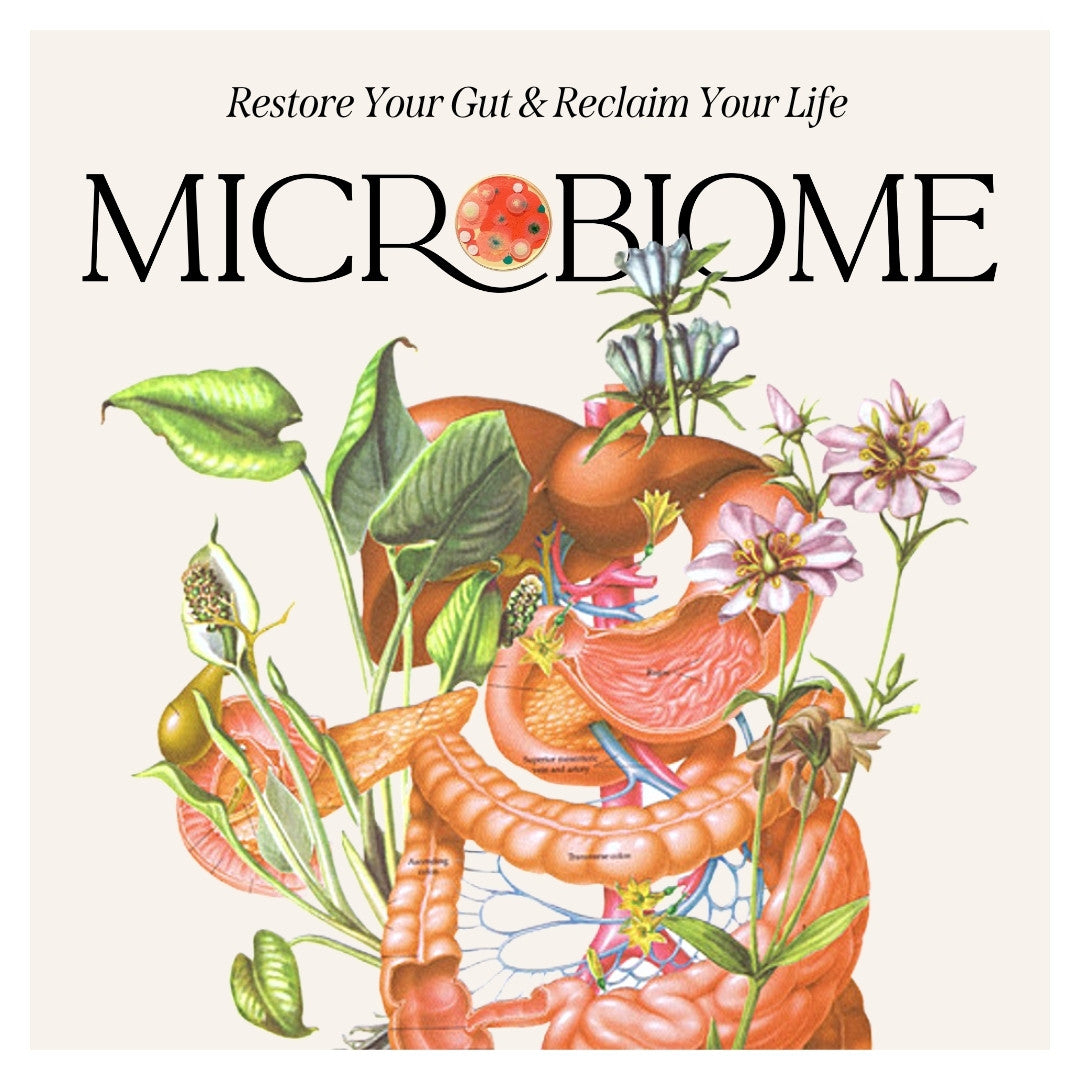

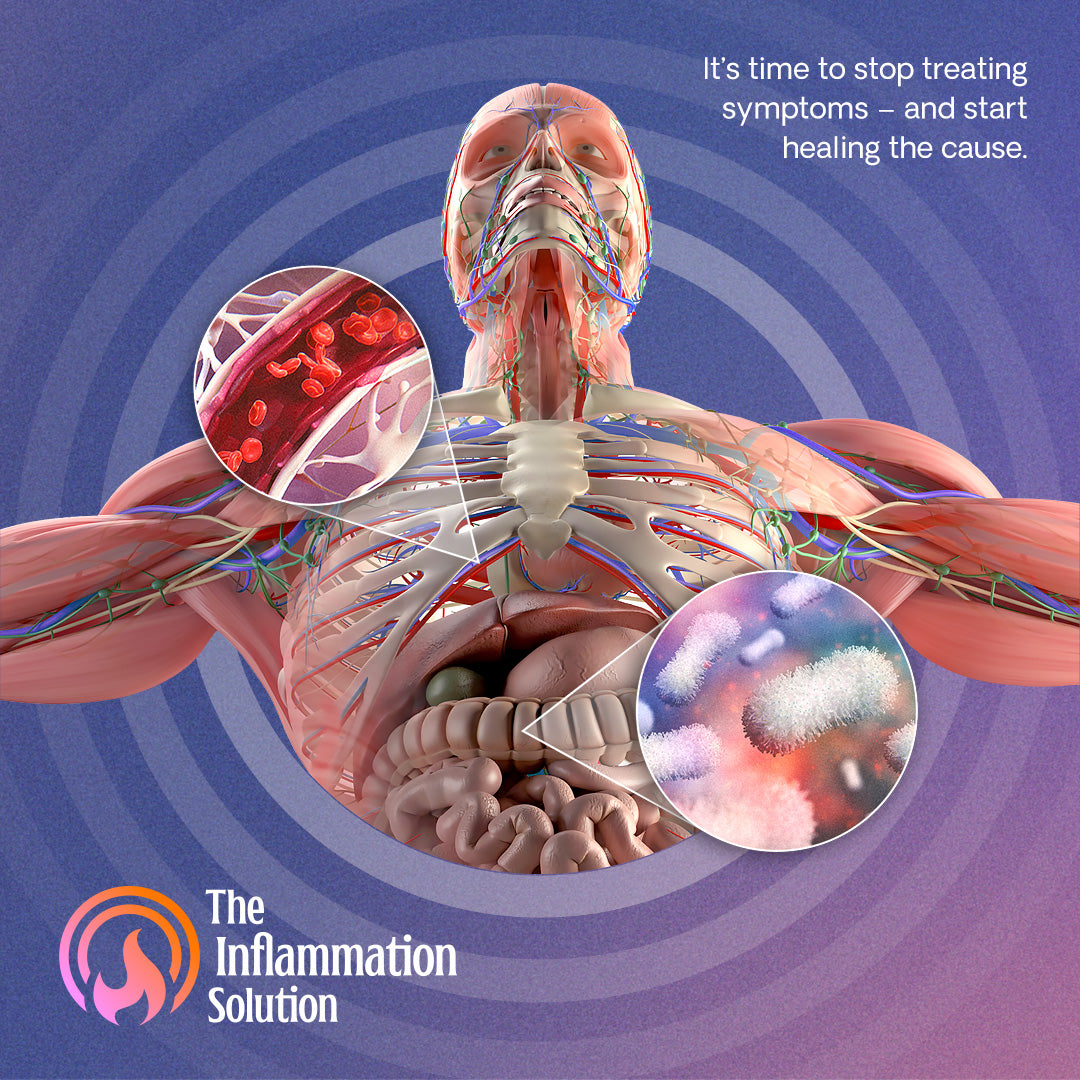

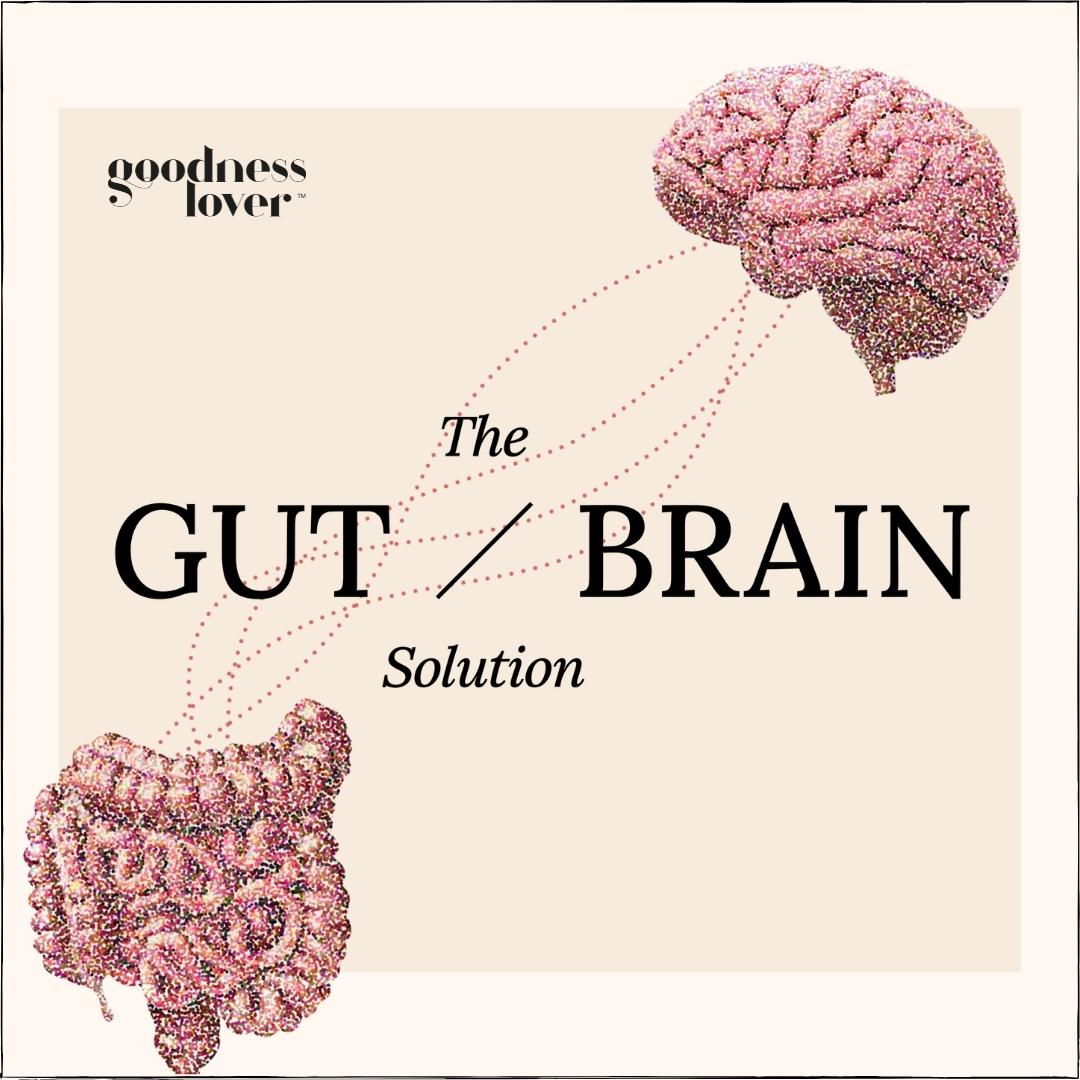




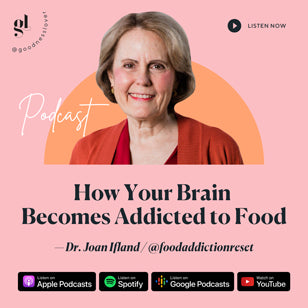
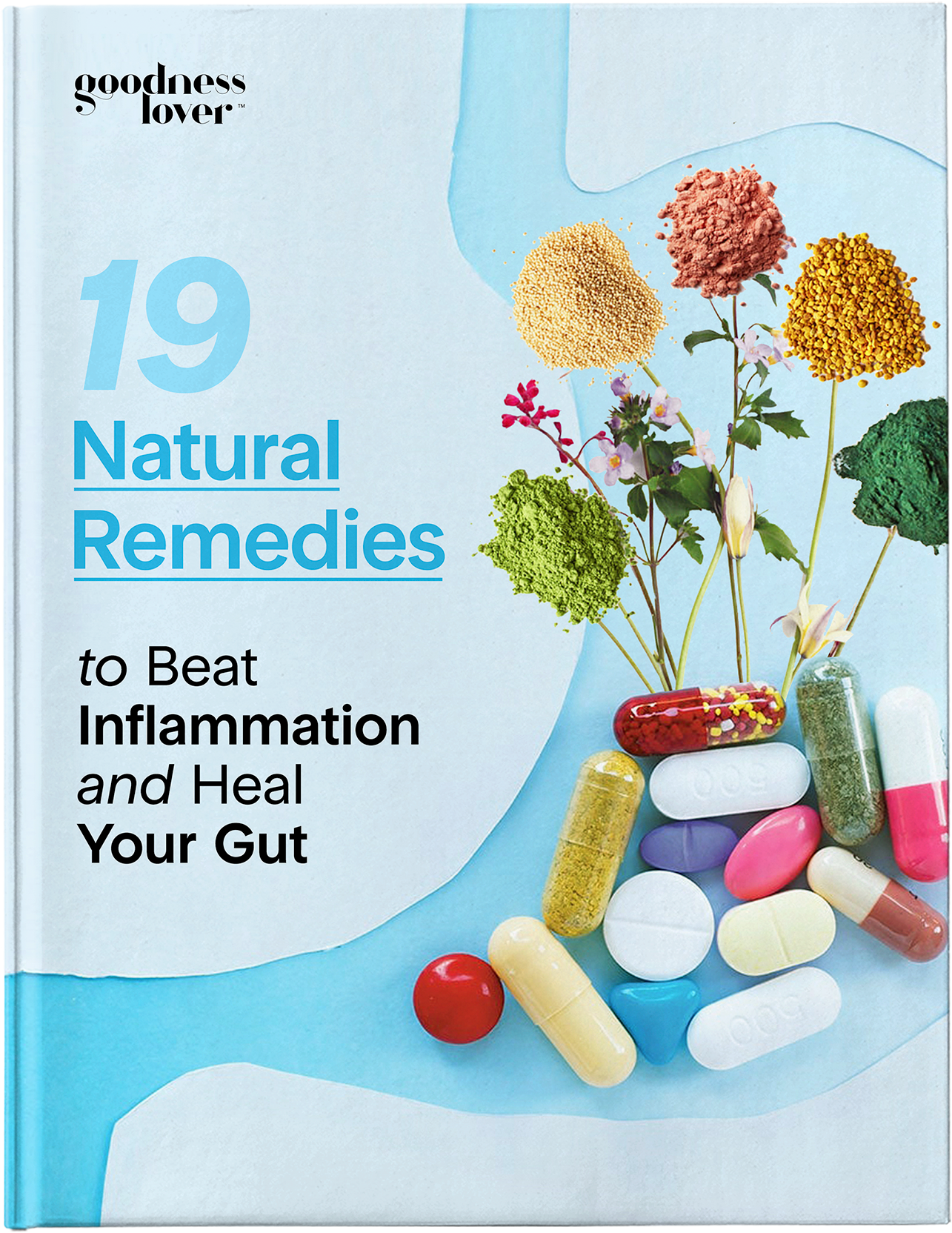
What Do You Think? Comment Below: